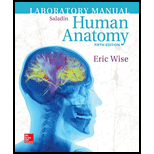
Concept explainers
To explain:
The muscle compartments and the connective tissue that separate them.
Introduction:
Muscle is a bundle or band of fibrous tissue present in a human or animal body. It can contract and move in preserving the position of body parts. Muscles play a role in the production of force and motion. They are mainly responsible for sustaining and shifting posture, locomotion.
Explanation of Solution
Muscles are linked to bones by the help of tendons. These muscles help in the movement of bones. The ligament can be defined as a short band of flexible, tough, and fibrous connective tissue. A thin and threadlike structure which combines to form plant or animal tissue is known as a fiber.
The fibrous sheets of connective tissues are known as fasciae in the limbs. These fasciae enclose the spaces known as compartments. Every compartment has one or more functionally associated muscles along with their nerve and blood supplies.
For example,the compartmentalization in the pelvic floor and abdominal wall. Also, the muscles of the upper limb are divided into anterior and posterior compartments. While the lower limb is divided into the anterior, posterior, medial and lateral compartments.
Intermuscular septa are the thick fasciae that separate the major compartments.
The fibrous sheets of connective tissues are known as fasciae in the limbs. These fasciae enclose the spaces known as compartments.
Want to see more full solutions like this?
Chapter 12 Solutions
Laboratory Manual for Human Anatomy
- Movements of the body occur at joints. Describe how muscles are arranged around the joints of the body.arrow_forwardWhat is the linea alba? a small muscle that helps with compression of the abdominal organs a long tendon that inns down the middle of the rectus abdominis a long band of collagen fibers that connects the hip to the knee another name for the tendinous inscriptionarrow_forwardThe tendons of which muscles form the rotator cuff? Why is the rotator cuff important?arrow_forward
- Which muscles form the hamstrings? How do they function together?arrow_forwardThe two types of smooth muscle are unitary and multi unit. Which type would you expect to find in the muscularis externa, and what characteristics make it well suited for this location?arrow_forwardA muscle whose fascicles are arranged at an angle to a central longitudinal tendon has this arrangement: (a) circular, (b) longitudinal, (c) parallel, (d) pennate, (e) convergent.arrow_forward
- Tendons are an extension of what part of a muscle?arrow_forwardWomen who wear high heels most of thetime may suffer painful “high heel syndrome” when they go barefoot or wear flatshoes. What muscle(s) and tendon(s) areinvolved? Explain.arrow_forwardTo what structures in a skeletal muscleare the endoneurium, perineurium, and epineuriumcomparable?arrow_forward
 Anatomy & PhysiologyBiologyISBN:9781938168130Author:Kelly A. Young, James A. Wise, Peter DeSaix, Dean H. Kruse, Brandon Poe, Eddie Johnson, Jody E. Johnson, Oksana Korol, J. Gordon Betts, Mark WomblePublisher:OpenStax College
Anatomy & PhysiologyBiologyISBN:9781938168130Author:Kelly A. Young, James A. Wise, Peter DeSaix, Dean H. Kruse, Brandon Poe, Eddie Johnson, Jody E. Johnson, Oksana Korol, J. Gordon Betts, Mark WomblePublisher:OpenStax College Human Biology (MindTap Course List)BiologyISBN:9781305112100Author:Cecie Starr, Beverly McMillanPublisher:Cengage Learning
Human Biology (MindTap Course List)BiologyISBN:9781305112100Author:Cecie Starr, Beverly McMillanPublisher:Cengage Learning

